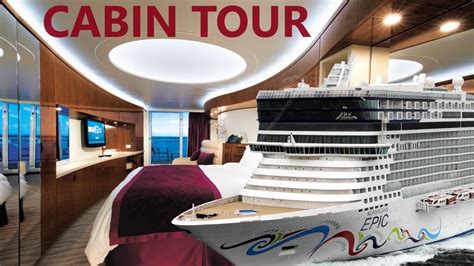
A mother and daughter were left behind in São Tomé and Príncipe by the Norwegian Epic cruise ship due to a miscommunication regarding the boarding time after a private tour, sparking outrage and confusion.
Pamela Jay and her daughter, who were on a 12-day cruise, found themselves stranded on the African island after returning to the port at 3:00 PM, the time they believed was the all-aboard deadline, only to see the ship already departing. According to Jay, conflicting information from crew members led to the misunderstanding. While one crew member reportedly advised them that 3:00 PM was the return time, the actual all-aboard time was 2:00 PM. Norwegian Cruise Line (NCL) has stated that the all-aboard time was clearly communicated on the ship’s daily schedule and at the gangway.
Jay recounted the ordeal to News Center 7, expressing her shock and disbelief: “I looked and I [saw] the ship pulling away. I was like, ‘No, no, no, this cannot be happening.'” The incident has ignited a debate about cruise line responsibility, passenger communication, and the potential for improved protocols to prevent similar occurrences.
Following the incident, Jay detailed her efforts to contact NCL and arrange transportation to rejoin the cruise. She described the initial difficulty in getting assistance and the frustration of being left in a foreign country without necessary medications or personal belongings. NCL eventually arranged for the pair to fly to Gambia and rejoin the ship. However, the experience has left Jay questioning the cruise line’s communication and support systems.
The incident highlights the critical importance of clear and consistent communication between cruise lines and passengers, especially regarding time-sensitive information like all-aboard times. It also raises questions about the adequacy of cruise line protocols for handling situations where passengers are inadvertently left behind in foreign ports.
Norwegian Cruise Line maintains that the all-aboard time was clearly communicated to all passengers and displayed prominently in multiple locations. They emphasize that passengers are ultimately responsible for ensuring they are back on board by the designated time. The company released a statement: “While this is a very unfortunate situation, the guests were responsible for ensuring they return to the vessel at the published time, which was communicated multiple times via various channels.”
The incident continues to draw attention online, with many questioning NCL’s handling of the situation and expressing sympathy for Jay and her daughter. The case serves as a cautionary tale for cruise passengers and a reminder of the potential pitfalls of international travel, as well as the importance of meticulous planning and clear communication. The question remains: What steps can cruise lines take to prevent similar incidents from happening in the future, and what responsibility do passengers bear in ensuring they adhere to the cruise schedule? This incident has triggered discussions about the responsibilities of both cruise lines and passengers and what measures can prevent such miscommunications in the future.
In-Depth Analysis and Background
The case of Pamela Jay and her daughter being left behind by the Norwegian Epic underscores a complex interplay of factors, including cruise line communication protocols, passenger responsibility, and the inherent risks associated with international travel. To fully understand the situation, it’s essential to delve into the details of cruise operations, communication strategies, and the legal and ethical obligations of cruise lines to their passengers.
Cruise Line Communication Protocols:
Cruise lines employ a variety of methods to communicate important information to passengers, including:
- Daily Schedules: These schedules, typically delivered to passenger cabins each evening, outline the following day’s activities, port arrival and departure times, entertainment options, and other relevant details.
- Announcements: Announcements are made over the ship’s public address system to inform passengers of important updates, such as changes to the itinerary or reminders about all-aboard times.
- Digital Displays: Many cruise ships feature digital displays in public areas that provide real-time information, including the current time, port of call, and all-aboard time.
- Mobile Apps: Cruise lines increasingly utilize mobile apps to communicate with passengers, allowing them to access schedules, make reservations, and receive notifications.
- Verbal Communication: Crew members are often available to answer questions and provide information to passengers.
In the case of the Norwegian Epic, NCL claims that the all-aboard time was clearly communicated through multiple channels, including the daily schedule and announcements. However, Jay contends that she received conflicting information from a crew member, leading to the misunderstanding. This discrepancy highlights the potential for miscommunication, even when multiple channels are used.
Passenger Responsibility:
While cruise lines have a responsibility to provide clear and accurate information, passengers also bear a significant responsibility for ensuring they are aware of the ship’s schedule and adhere to the all-aboard times. Passengers are typically advised to:
- Review the daily schedule carefully.
- Set alarms to ensure they return to the ship on time.
- Carry a copy of their passport and other essential documents.
- Be aware of the local time zone.
- Communicate any concerns or questions to crew members.
NCL emphasizes that passengers are ultimately responsible for their own actions and for ensuring they return to the vessel by the designated time. The company’s statement reflects this perspective: “While this is a very unfortunate situation, the guests were responsible for ensuring they return to the vessel at the published time, which was communicated multiple times via various channels.”
Legal and Ethical Obligations:
Cruise lines have both legal and ethical obligations to their passengers. These obligations include:
- Providing a safe and secure environment.
- Delivering the services and amenities promised in the cruise contract.
- Communicating important information in a clear and timely manner.
- Taking reasonable steps to assist passengers who are in distress.
The extent of a cruise line’s responsibility for passengers who are left behind in port is a complex legal issue that can vary depending on the specific circumstances and the terms of the cruise contract. However, most legal experts agree that cruise lines have a duty to act reasonably to assist passengers who are inadvertently left behind due to circumstances beyond their control.
The Aftermath and Resolution:
Following the incident, Jay expressed her frustration with NCL’s initial response, stating that it was difficult to get assistance and that she felt stranded in a foreign country without necessary medications or personal belongings. Eventually, NCL arranged for Jay and her daughter to fly to Gambia and rejoin the ship. While Jay appreciated the eventual resolution, she remained critical of the cruise line’s communication and support systems.
The incident has raised questions about the adequacy of cruise line protocols for handling situations where passengers are left behind. Some industry experts have suggested that cruise lines should implement more proactive measures to prevent such occurrences, such as:
- Conducting more thorough headcounts before departure.
- Providing passengers with a dedicated contact person to assist with any issues.
- Developing contingency plans for passengers who are left behind in port.
- Improving communication protocols to ensure that all passengers receive accurate and timely information.
Deeper Context: Cruise Industry Practices and Passenger Experiences
The cruise industry is a global behemoth, ferrying millions of passengers annually to exotic destinations. This scale brings logistical complexities and potential for miscommunication. Standard practices are designed to ensure smooth operations, but the human element can sometimes lead to errors.
Standard Operating Procedures:
- Manifest Management: Cruise ships meticulously track passengers boarding and disembarking. The manifest, a detailed list of all passengers, is constantly updated. Headcounts are typically conducted before departure from each port.
- Communication Systems: As noted, cruise lines use multiple communication channels. However, reliance on these systems assumes passengers are actively checking them. Not all passengers may have smartphones or consistent access to the internet.
- Port Agents: Cruise lines often employ local agents in each port to assist with logistics, including passenger transfers and emergency support.
- Security Protocols: Security is paramount. Passengers are required to present their cruise cards when boarding and disembarking, and security personnel monitor the gangway.
Potential Points of Failure:
- Language Barriers: On cruises with diverse nationalities, language barriers can impede effective communication.
- Conflicting Information: As alleged in this case, conflicting information from different crew members can create confusion.
- Assumptions: Crew members might assume passengers are aware of standard procedures, leading to a lack of explicit communication.
- Individual Circumstances: Passengers may have unique circumstances (medical conditions, disabilities, etc.) that require special consideration.
- Human Error: Despite best efforts, human error is inevitable. Crew members can make mistakes, and passengers can misinterpret information.
Examining Similar Cases:
This is not the first time passengers have been left behind by a cruise ship. Similar incidents have occurred on other cruise lines, often with similar contributing factors: miscommunication, passenger negligence, or unforeseen circumstances. These incidents highlight the need for continuous improvement in cruise line protocols and a heightened awareness among passengers.
The Role of Insurance:
Travel insurance can provide coverage for expenses incurred when a passenger is left behind, including accommodation, transportation, and lost belongings. However, the terms and conditions of travel insurance policies vary widely, so it’s essential to review the policy carefully. Many policies exclude coverage for incidents that are deemed to be the passenger’s fault.
The Court of Public Opinion:
In the age of social media, incidents like this can quickly go viral, damaging a cruise line’s reputation. Cruise lines are often highly sensitive to public opinion and may take steps to mitigate negative publicity, such as offering compensation or issuing public apologies.
Ethical Considerations:
Beyond legal obligations, cruise lines have an ethical responsibility to ensure the well-being of their passengers. This includes providing clear and accurate information, assisting passengers who are in distress, and taking reasonable steps to prevent foreseeable problems.
Lessons Learned:
The incident involving Pamela Jay and her daughter serves as a valuable lesson for both cruise lines and passengers. Cruise lines should review their communication protocols, improve crew training, and develop more robust contingency plans. Passengers should take responsibility for their own actions, be aware of the ship’s schedule, and communicate any concerns to crew members.
The Future of Cruise Travel:
As the cruise industry continues to grow, it will face increasing pressure to improve safety, security, and customer service. Cruise lines that prioritize passenger well-being and invest in robust communication and support systems will be best positioned to thrive in the long term. The integration of technology, such as real-time tracking and personalized communication platforms, may also play a role in preventing future incidents.
The case underscores the importance of clear communication, diligent planning, and a mutual understanding of responsibilities between cruise lines and their passengers. It serves as a reminder that even in the meticulously planned world of cruise travel, unexpected events can occur, and preparedness is key.
Frequently Asked Questions (FAQ)
Q1: What happened to Pamela Jay and her daughter on the Norwegian Epic cruise?
A: Pamela Jay and her daughter were left behind in São Tomé and Príncipe by the Norwegian Epic cruise ship. They returned to the port at 3:00 PM, believing it was the all-aboard time, but the ship had already departed because the actual all-aboard time was 2:00 PM. This was due to a miscommunication.
Q2: What was Norwegian Cruise Line’s (NCL) response to the incident?
A: NCL stated that the all-aboard time was clearly communicated on the ship’s daily schedule and at the gangway. They maintain that passengers are responsible for ensuring they return to the vessel at the published time, emphasizing that the information was communicated multiple times through various channels. NCL eventually arranged for Jay and her daughter to fly to Gambia to rejoin the ship.
Q3: What does Pamela Jay claim caused the misunderstanding?
A: Jay claims that conflicting information from crew members led to the misunderstanding. She said one crew member advised them that 3:00 PM was the return time, whereas the actual all-aboard time was 2:00 PM.
Q4: What measures can cruise lines take to prevent similar incidents from happening in the future?
A: Industry experts suggest that cruise lines should implement proactive measures such as:
- Conducting more thorough headcounts before departure.
- Providing passengers with a dedicated contact person to assist with any issues.
- Developing contingency plans for passengers who are left behind in port.
- Improving communication protocols to ensure all passengers receive accurate and timely information.
Q5: What responsibility do passengers bear in ensuring they adhere to the cruise schedule?
A: Passengers are responsible for:
- Reviewing the daily schedule carefully.
- Setting alarms to ensure they return to the ship on time.
- Carrying a copy of their passport and other essential documents.
- Being aware of the local time zone.
- Communicating any concerns or questions to crew members.
Expanded Context: The Cruise Contract and Legal Implications
The cruise ticket contract is a critical document that outlines the rights and responsibilities of both the cruise line and the passenger. It is typically a lengthy and complex document, often filled with legal jargon, and passengers are often unaware of its full contents. However, it is legally binding and governs the relationship between the cruise line and the passenger.
Key Provisions of the Cruise Contract:
- Limitation of Liability: Cruise contracts typically contain provisions that limit the cruise line’s liability for various types of damages, including personal injury, property damage, and emotional distress. These limitations can be significant and may prevent passengers from recovering full compensation for their losses.
- Choice of Law and Forum: Cruise contracts also typically specify the law that will govern any disputes and the forum in which any lawsuits must be filed. This can be disadvantageous to passengers, as the chosen law may be less favorable to their claims, and the chosen forum may be inconvenient or expensive to access.
- Time Limits for Filing Claims: Cruise contracts typically impose strict time limits for filing claims against the cruise line. These time limits are often shorter than the statutes of limitations that would otherwise apply, and passengers who fail to meet these deadlines may be barred from pursuing their claims.
- Exculpatory Clauses: Some cruise contracts contain exculpatory clauses that attempt to relieve the cruise line of liability for its own negligence. However, these clauses are often disfavored by courts and may not be enforceable in all jurisdictions.
- Force Majeure: Cruise contracts typically contain a force majeure clause that excuses the cruise line from performance if it is prevented from doing so by events beyond its control, such as weather, war, or government regulations.
In the context of passengers being left behind in port, the cruise contract may address issues such as the cruise line’s responsibility for assisting passengers in returning to the ship, the cruise line’s liability for expenses incurred by passengers, and the cruise line’s right to alter the itinerary.
Legal Implications of Being Left Behind:
When a passenger is left behind in port, several legal issues may arise:
- Breach of Contract: The passenger may argue that the cruise line breached the cruise contract by failing to transport them to all of the scheduled ports of call.
- Negligence: The passenger may argue that the cruise line was negligent in failing to ensure that they were back on board the ship before it departed.
- False Imprisonment: In some cases, the passenger may argue that they were falsely imprisoned if they were detained against their will by local authorities.
- Intentional Infliction of Emotional Distress: The passenger may argue that the cruise line’s actions caused them severe emotional distress.
The success of these claims will depend on the specific facts of the case, the terms of the cruise contract, and the applicable law.
Duty of Care:
Cruise lines have a duty of care to their passengers, which means they must take reasonable steps to protect them from foreseeable harm. This duty includes providing a safe and secure environment, communicating important information in a clear and timely manner, and taking reasonable steps to assist passengers who are in distress.
The extent of the cruise line’s duty of care to passengers who are left behind in port is a complex legal issue. Some courts have held that cruise lines have a duty to take reasonable steps to assist passengers in returning to the ship, while others have held that cruise lines have no such duty.
Factors Considered by Courts:
When determining whether a cruise line has breached its duty of care to a passenger who has been left behind, courts will consider a variety of factors, including:
- The terms of the cruise contract.
- The foreseeability of the harm.
- The reasonableness of the cruise line’s actions.
- The passenger’s own conduct.
- The availability of alternative means of transportation.
- The cost of assisting the passenger.
Case Law:
There have been numerous cases involving passengers who have been left behind by cruise ships. The outcomes of these cases have varied depending on the specific facts and the applicable law. However, some general principles have emerged:
- Cruise lines are generally not liable for passengers who are left behind due to their own negligence.
- Cruise lines may be liable for passengers who are left behind due to the cruise line’s negligence.
- Cruise lines have a duty to take reasonable steps to assist passengers who are left behind due to circumstances beyond their control.
Risk Management:
Cruise lines employ a variety of risk management strategies to minimize the likelihood of passengers being left behind in port. These strategies include:
- Providing clear and accurate information about port arrival and departure times.
- Conducting thorough headcounts before departure.
- Providing passengers with a dedicated contact person to assist with any issues.
- Developing contingency plans for passengers who are left behind in port.
- Training crew members to handle situations where passengers are left behind.
Insurance Coverage:
Travel insurance can provide coverage for expenses incurred when a passenger is left behind, including accommodation, transportation, and lost belongings. However, the terms and conditions of travel insurance policies vary widely, so it’s essential to review the policy carefully.
Conclusion:
The legal implications of being left behind by a cruise ship are complex and fact-dependent. Passengers who are left behind should consult with an attorney to determine their rights and options. Cruise lines should review their policies and procedures to ensure that they are taking reasonable steps to protect passengers from being left behind and to assist passengers who are inadvertently left behind. The cruise contract plays a significant role in defining the legal relationship and responsibilities, and passengers should be aware of its terms.









